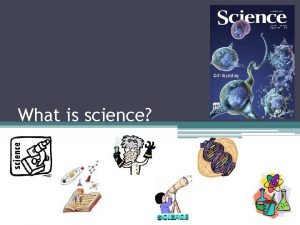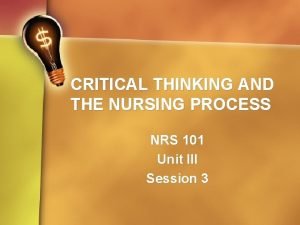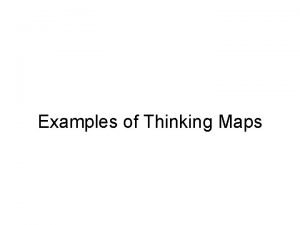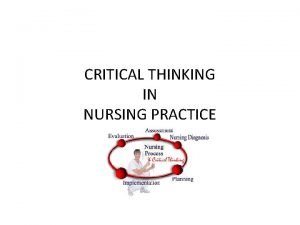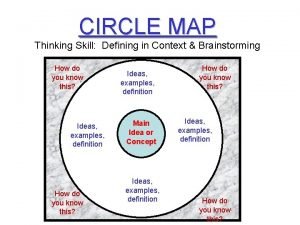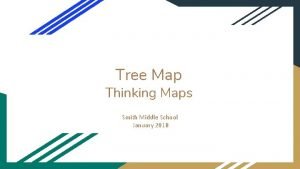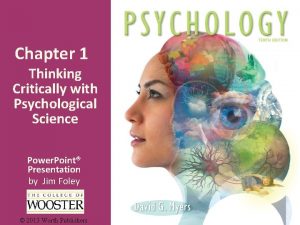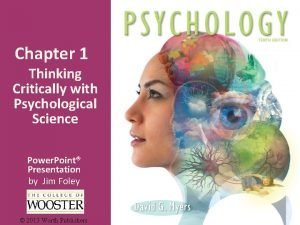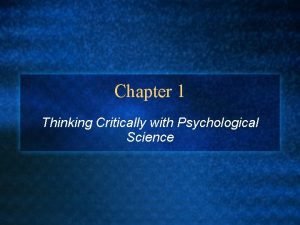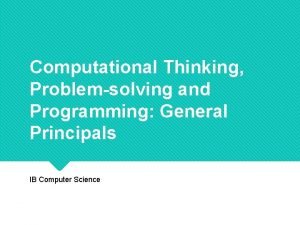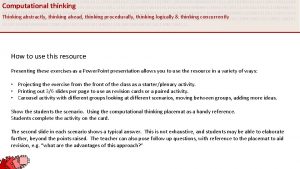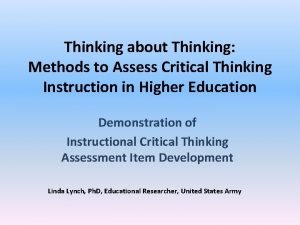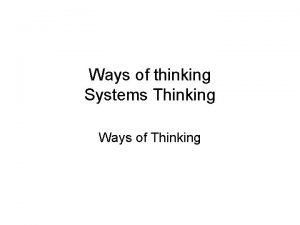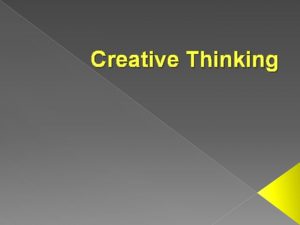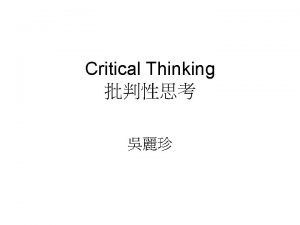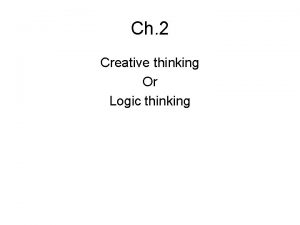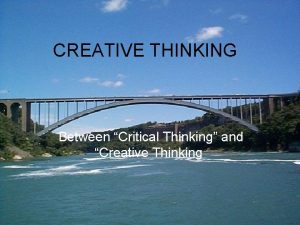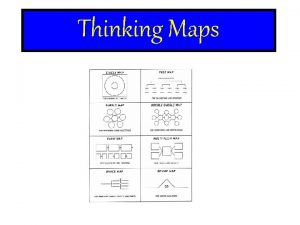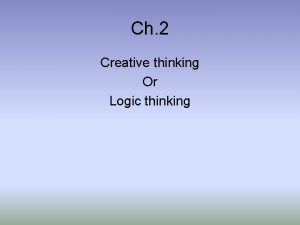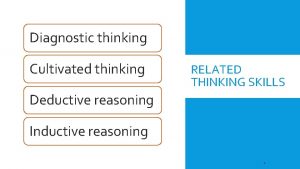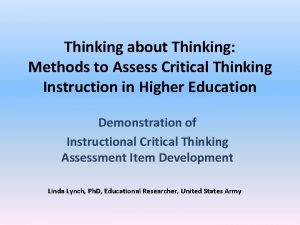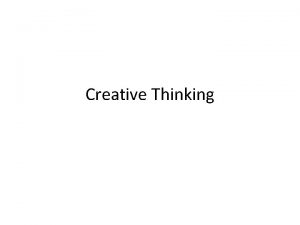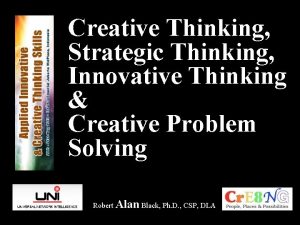What is science Science is process of thinking






















- Slides: 22

What is science?

Science is… • process of thinking, observing, & studying our world by using the scientific method to gain knowledge, answer questions, & solve problems! • Experiments = Evidence!

Questions to Consider! � Will science provide answers to all our questions? Why? � What is science limited by?

Question Activity � One question that can be answered by biology/science? & � One question that can not be answers by biology/science?

Steps of the Scientific Method Identify a Problem 2. Gathering Information 3. Make a Hypothesis 4. Perform an Experiment 5. Analyze results 6. Draw Conclusions 7. Repeat & Communicate 1.

Scientific Method � Step 1 �Identify a problem �Example: My car will not start. � Step 2 �Gather information �Example: lights will not turn on, key turns but engine makes a funny noise ○ Observation vs. Inference

Lesson Closure – Exit Ticket Today’s objective was to start to identify & discuss the important parts & purpose of the scientific method. � What are some important parts of the scientific method? � Why are observations important in science?

Steps of the Scientific Method Identify a Problem 2. Gathering Information 3. Make a Hypothesis 4. Perform an Experiment 5. Analyze results 6. Draw Conclusions 7. Repeat & Communicate 1.

Scientific Method � Step 3: Make a hypothesis ○ prediction about what you think is going to happen in an experiment �Specific to an experiment �Testable �If, then format

Example: Fish are dying in a pond. (problem). We investigate the pond & find it is near a housing development, highway, and a farm. (info) We predict that fertilizer from the lawns of the houses & the farm is washing into the pond and killing the fish.

How could we test these questions? �Does cigarette smoking increases the risk of lung cancer? �Can eating breakfast increases performance in school? �How could we raise school spirit? What would your hypothesis be?

Scientific Method � Step 4: Perform an experiment �Test the hypothesis! �Planned out Procedure �Collect Data (observations)

Procedure Activity � 2 Notes Cards �Draw a simple picture on one note card. �On the other card, write a procedure to explain to someone else how to draw the same exact picture. � Pair Up �Using the procedure only, see if your partner can draw your picture. �Hint: don’t tell them what it is!

Scientific Method � Step 5 Analyze the Data �What does the data mean? �Identify relationships

Analyze • Q: What does this data say? • A: As temperature increases, dissolved oxygen decreases Temperature (0 C) 20 Dissolved Oxygen (ppm) 30 33 40 29 50 15 60 10 45

Steps of the Scientific Method Identify a Problem 2. Gathering Information 3. Make a Hypothesis 4. Perform an Experiment 5. Analyze results 6. Draw Conclusions 7. Repeat & Communicate 1.

Scientific Method � Step 6: Draw conclusions �My data did support my hypothesis that… Or… �My data did not support my hypothesis that…

What would your conclusion be? • Hypothesis If maintenance increases the number of recycling cans in the lunch room, then the amount of trash will decrease. • Data: # of recycling cans Amount of trash (tons) 2 3 4 5 6 250 200 150 149

Last is to… � Repeat ◦ Why would this be important?

� Variables Contr olled Expe rimen t! �Only want to change one factor at a time! Why? �Constants: variables you keep the same �Independent vs. Dependent variables �Control Group � Collect Data �Qualitative vs. Quantitative

You want to know what color flowers butterflies like best. You choose an area you know is naturally inhabited by butterflies. You plant 6 rows of flowers, each row a different color of the same type of flower. Twice a day, each day (morning & evening) you add up the number of butterflies found on each different color of flowers. � What is your independent variable? � What is your dependent variable? � What are your constants?

Results of Science � Scientific Theory �explanation that has been supported by many experiments ○ Makes Predictions ○ Has lots of evidence to support those predictions ○ Is constantly being tested!
 Science is a process of thinking
Science is a process of thinking Positive thinking vs negative thinking examples
Positive thinking vs negative thinking examples Thinking about your own thinking
Thinking about your own thinking Holistic judgement
Holistic judgement Perbedaan critical thinking dan creative thinking
Perbedaan critical thinking dan creative thinking Thinking about you thinking about me
Thinking about you thinking about me What is my favourite subject
What is my favourite subject Stanford design thinking process
Stanford design thinking process Nursing process and critical thinking
Nursing process and critical thinking Nursing process and critical thinking
Nursing process and critical thinking What is brace map
What is brace map Importance of critical thinking in nursing process
Importance of critical thinking in nursing process Active critical reading
Active critical reading Brainstorming circle map
Brainstorming circle map Robert f bales interaction process analysis
Robert f bales interaction process analysis Put on your thinking hat
Put on your thinking hat Main idea tree map
Main idea tree map Thinking critically with psychological science
Thinking critically with psychological science Design thinking for data science
Design thinking for data science Thinking critically with psychological science
Thinking critically with psychological science Thinking critically with psychological science answer key
Thinking critically with psychological science answer key Thinking procedurally computer science
Thinking procedurally computer science Bones practical exam
Bones practical exam
